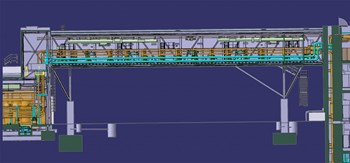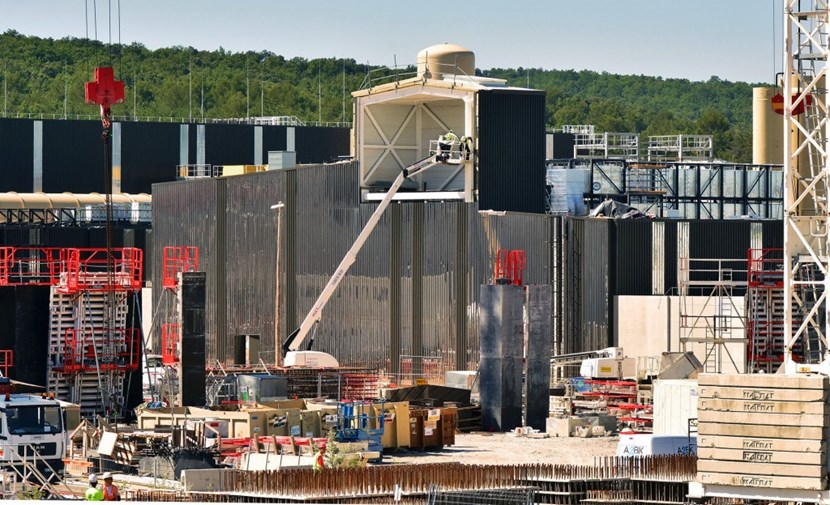ITER NEWSLINE
-
Image of the week
A cabin on the roof?
Image of the week | A cabin on the roof?
They look like cabins on the roof but in ITER parlance they are called "mezzanines." Under the protection of these large structures, the two bridges connecting the Magnet Power Conversion buildings to the Tokamak Building will get off to a good start.
Installed 10.5 metres above the platform, the 50-metre-long bridges will shelter the massive, actively cooled busbars that feed DC current to the magnets, as well as cooling pipes running parallel.

The space inside the two bridges connecting the Magnet Power Conversion buidings to the tokamak will be occupied by the massive busbar delivering DC power to the magnetic system(orange), cooling water piping (light blue) and cable trays. (On this drawing the Magnet Power Conversion buiding is on the left.)
As busbars cannot be bent, they need to be fitted with massive "angle pieces" when transitioning from vertical routing inside the Magnet Power Converter Building to horizontal routing inside the bridge. The size of the "angle piece" has determined the size of the mezzanine (
see drawing).
return to the latest published articles








